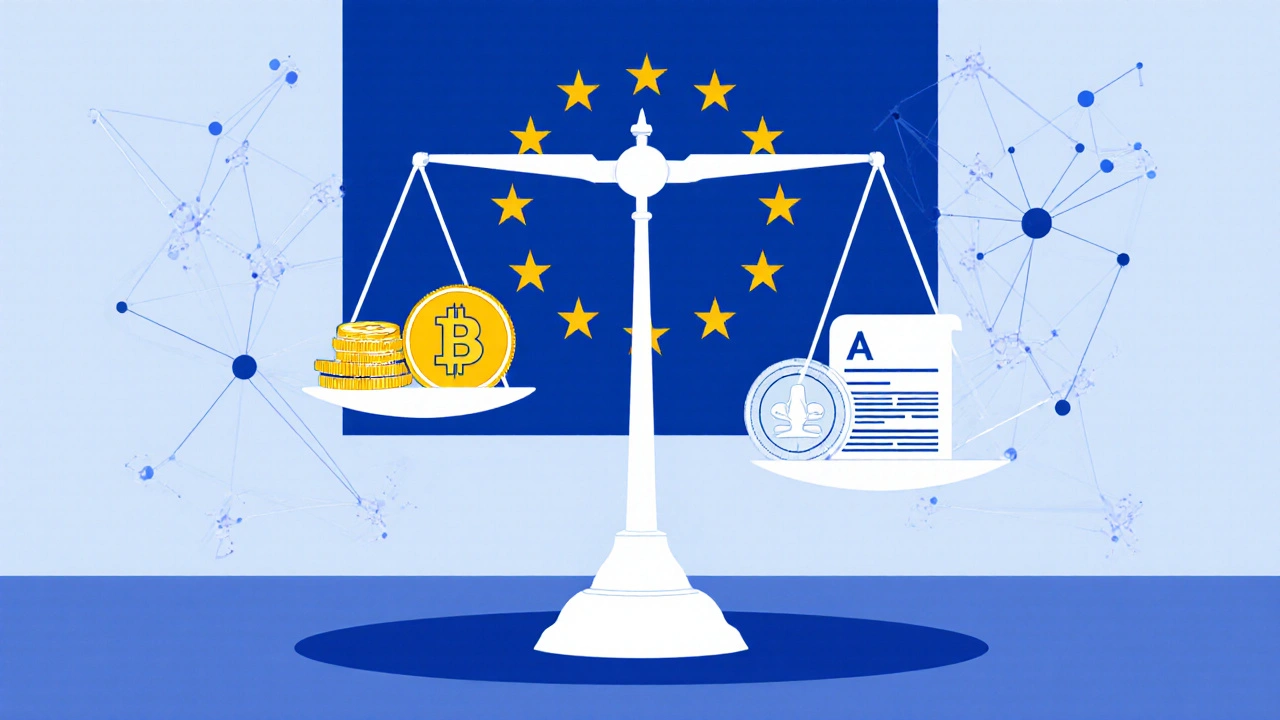When El Salvador made Bitcoin legal tender in 2021, it didn’t just make headlines-it shook the foundation of how governments think about money. At the same time, China cracked down harder than any other major economy, banning mining, trading, and even access to offshore exchanges. Today, these two extremes aren’t outliers-they’re bookends on a global spectrum of crypto policy that’s reshaping finance, sovereignty, and digital freedom.
El Salvador’s Bitcoin Experiment: Bold Vision, Mixed Results
El Salvador didn’t just experiment with Bitcoin; it bet its entire monetary system on it. On September 7, 2021, Bitcoin became legal tender alongside the U.S. dollar. The goal? Reduce remittance costs, boost financial inclusion, and attract investment. By 2025, the country had rolled out 200 Bitcoin ATMs, launched the Chivo wallet for 4.3 million users (85% of adults), and even built a whole city-Bitcoin City-powered by volcanic energy and backed by $500 million in Bitcoin bonds. But the reality on the ground tells a different story. Only 28% of merchants accept Bitcoin directly, down from 45% in 2022. The Chivo wallet processes about 1.2 million transactions a month, but most users convert Bitcoin to dollars immediately. Why? Volatility. A 62% drop in Bitcoin’s price between late 2021 and 2022 wiped out $1.1 billion from El Salvador’s national holdings-3.4% of its GDP. The government’s $100 million Bitcoin Trust Fund helped stabilize things, but it didn’t fix the core problem: people don’t trust a currency that can lose a third of its value overnight. Even the promised savings on remittances were minimal. Instead of cutting costs by 3-5 percentage points, the World Bank found remittance fees dropped by just 0.8 points-from 5.2% to 4.4%. And while the state once fined businesses for refusing Bitcoin, that rule was softened in late 2023. Now, businesses can convert payments to dollars without penalty. The experiment didn’t fail-it evolved. But it also revealed a hard truth: making something legal doesn’t make it useful.China’s Crypto Crackdown: Total Ban, Underground Demand
While El Salvador embraced Bitcoin, China shut it down. In September 2021, the State Council declared all crypto transactions illegal financial activities. Mining operations were shut. Exchanges were blocked. Wallets were banned. By 2025, Chinese authorities had shut down over 12,450 websites and apps tied to crypto. The Cyberspace Administration claims 98.7% success in blocking access to offshore exchanges. Yet crypto didn’t disappear-it went underground. Chainalysis estimates Chinese citizens still hold $120 billion in crypto through peer-to-peer trades and offshore wallets. USDT dominates this shadow market, making up 82% of P2P stablecoin volume. Users rely on VPNs, decentralized exchanges, and even Telegram bots to trade. Transaction costs have risen 22% since 2023 because of the extra layers needed to hide activity. China’s real answer to crypto isn’t repression-it’s replacement. The People’s Bank of China has pushed its digital yuan (e-CNY) hard. By mid-2025, over 1.8 trillion yuan ($250 billion) had moved through e-CNY, used by 260 million accounts. That’s 18.3% of all retail payments in China. Unlike Bitcoin, e-CNY is fully controlled by the state. Every transaction is traceable. No anonymity. No volatility. No decentralization. It’s not a response to crypto-it’s the opposite of crypto.
The Middle Path: How the EU Got It Right
While El Salvador and China took polarized routes, the European Union carved out a third way. MiCA-Markets in Crypto-Assets-became fully enforceable in January 2025. It doesn’t ban crypto. It doesn’t force adoption. It regulates it. Under MiCA, every crypto exchange, wallet provider, and token issuer must be licensed. They need €150,000 in capital. They must store assets securely. They must publish clear white papers. Stablecoins like USDC and EURC must prove they hold enough reserves to back every coin. Algorithmic stablecoins? Banned. That’s not a restriction-it’s a safety net. The results? 24 of the EU’s 27 member states already comply. Firms like Coinbase and Kraken have built EU headquarters to meet the rules. Investors feel safe. Startups have clarity. And consumers? They get protection without losing access. MiCA isn’t perfect. It doesn’t yet cover DeFi or staking fully-that’s coming in MiCA II by 2026-2027. But it proves you don’t have to choose between a free-for-all and a total ban. You can build rules that let innovation thrive while keeping the system stable.The Rest of the World: A Patchwork of Rules
Outside these three models, the world is a patchwork. The U.S. is a mess-fragmented between the SEC, CFTC, and state regulators. The SEC filed 203 enforcement cases in 2024, up 37% from the year before. Meanwhile, the new GENIUS Act requires stablecoins to be backed 1:1 by U.S. dollars, but leaves a loophole for algorithmic ones. The UK moved faster. Its Cryptoassets Order 2025 gave the FCA direct control over exchanges and custody services. 117 firms are already registered. Nigeria banned crypto ads but lets licensed exchanges operate. India slapped a 30% tax on crypto gains but still became the third-largest crypto market by volume. Even in countries with restrictions, adoption doesn’t vanish. El Salvador ranks 17th in grassroots crypto use. China ranks 29th. But India, Pakistan, and Vietnam are all ahead. Why? Because people want control over their money. Regulations can slow it down, but they can’t stop it.
What’s Next? The Future of Crypto Policy
By 2027, most countries will have licensing systems for crypto firms. The Financial Stability Board’s 2025 report says 78% of jurisdictions are already moving that way. The real challenge isn’t whether to regulate-it’s how to do it across borders. China’s ban pushes users to DeFi protocols. Bitcoin City’s bonds rely on global investors. MiCA’s rules affect U.S. and Asian firms operating in Europe. The Global Financial Innovation Network saw a 34% jump in cross-border enforcement actions between 2023 and 2025. No country can isolate itself anymore. The next big shift will come from CBDCs-central bank digital currencies-interacting with crypto. Will they compete? Will they coexist? Will governments allow citizens to hold both a state-backed digital dollar and a Bitcoin wallet? The answer will define the next decade of finance.Lessons from the Frontlines
El Salvador’s story teaches this: you can’t legislate adoption. People need trust, stability, and ease of use-not slogans. China’s story teaches this: you can’t ban demand. If you shut down one channel, users find another. And the EU’s story teaches this: regulation isn’t the enemy of innovation. Clear, fair rules are its best friend. The future of crypto policy won’t be about choosing between El Salvador and China. It’ll be about building systems that protect users, prevent fraud, and let innovation grow-not by forcing people to use crypto, but by letting them choose it safely.Is Bitcoin really legal tender in El Salvador?
Yes, Bitcoin is legal tender in El Salvador alongside the U.S. dollar, as mandated by the Bitcoin Law passed in September 2021. However, in practice, most businesses convert Bitcoin to dollars immediately due to price volatility, and only 28% of merchants accept it directly as of late 2024.
Can you still use Bitcoin in China?
No, Bitcoin trading, mining, and exchange services are banned in China. All domestic crypto platforms were shut down by 2021. However, an estimated $120 billion in crypto assets are still held by Chinese citizens through offshore exchanges, peer-to-peer trades, and decentralized platforms using VPNs.
What is MiCA and why does it matter?
MiCA (Markets in Crypto-Assets) is the European Union’s comprehensive crypto regulation, fully in effect since January 2025. It requires all crypto firms to be licensed, hold capital reserves, and disclose risks. It bans risky algorithmic stablecoins and enforces transparency. MiCA matters because it’s the first unified, investor-friendly crypto rulebook in the world-and it’s already shaping how global firms operate.
Why is China pushing the digital yuan instead of allowing crypto?
China sees decentralized cryptocurrencies as a threat to financial control and monetary sovereignty. The digital yuan (e-CNY) gives the state full visibility into every transaction, eliminates cash anonymity, and allows direct monetary policy control. Unlike Bitcoin, e-CNY can’t be mined, isn’t volatile, and can’t be used to bypass capital controls.
Are crypto regulations getting stricter or looser globally?
Globally, regulations are becoming more structured-not necessarily stricter. The trend is toward licensing, transparency, and consumer protection. Countries like the U.S. and UK are moving toward clearer rules, while places like Nigeria and India are creating legal pathways for exchanges. The era of total bans or wild west experimentation is fading. The future belongs to regulated integration.



Sheetal Srivastava
November 26, 2025 AT 00:05Let’s be real-MiCA is just regulatory theater wrapped in EU bureaucracy. The capital requirements, white papers, reserve proofs-it’s all performative compliance for institutions that already have lawyers on retainer. Meanwhile, the real innovation? DeFi protocols operating on zero-knowledge rollups, unlicensed, unregulated, and unstoppable. You can’t regulate what’s permissionless. The EU thinks it’s building a cage, but it’s just painting the bars gold while the animals are already out in the wild.
And don’t get me started on ‘stablecoins’-if you’re not using a decentralized, overcollateralized model like DAI, you’re just issuing IOUs with a fancy API. MiCA banning algorithmic stablecoins? That’s not protection, that’s fear masquerading as policy.
Meanwhile, China’s e-CNY? A surveillance tool disguised as progress. No anonymity? No freedom. It’s not digital money-it’s digital servitude. And El Salvador? At least they tried to give people agency, even if it failed. The EU just wants to control the narrative. We’re not here to be regulated. We’re here to be free.